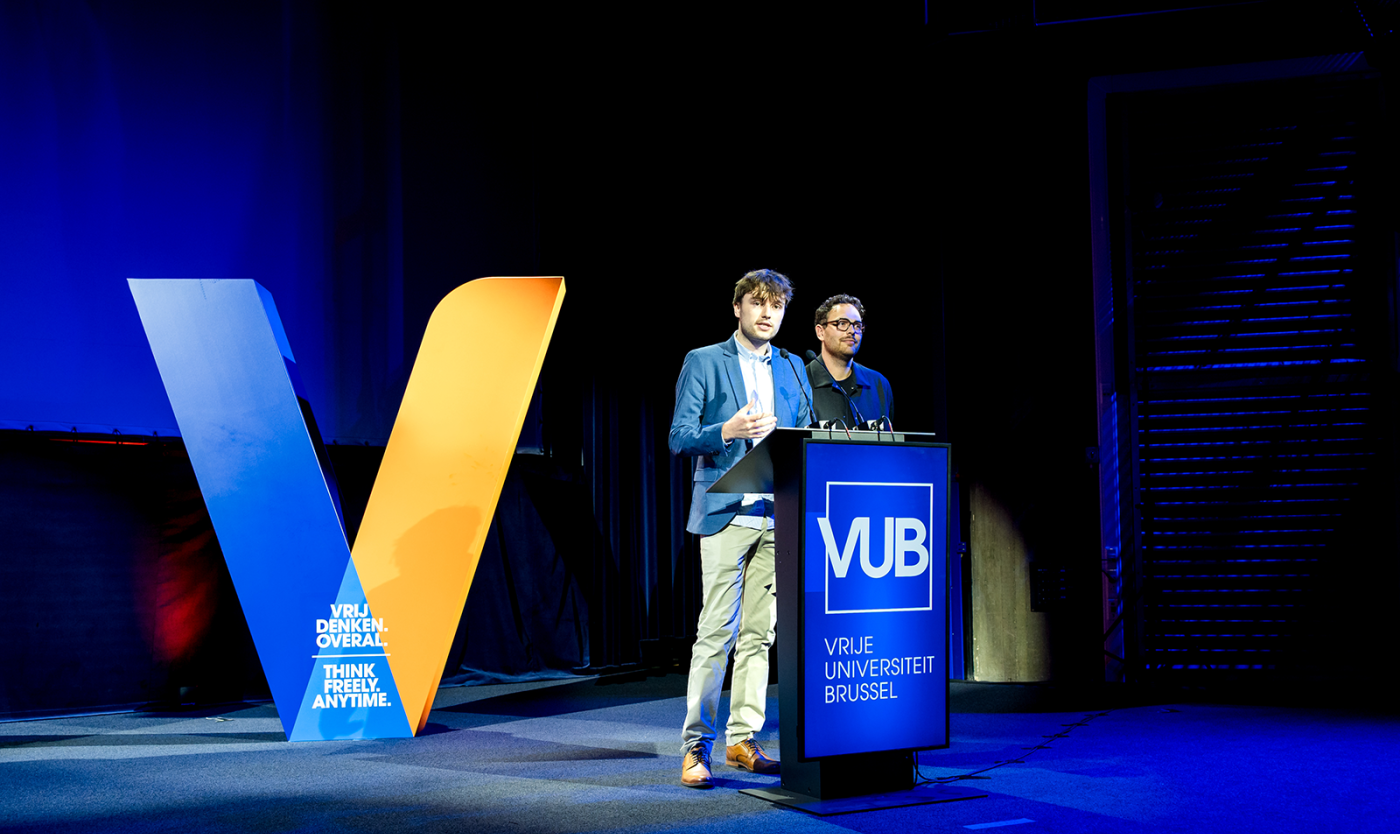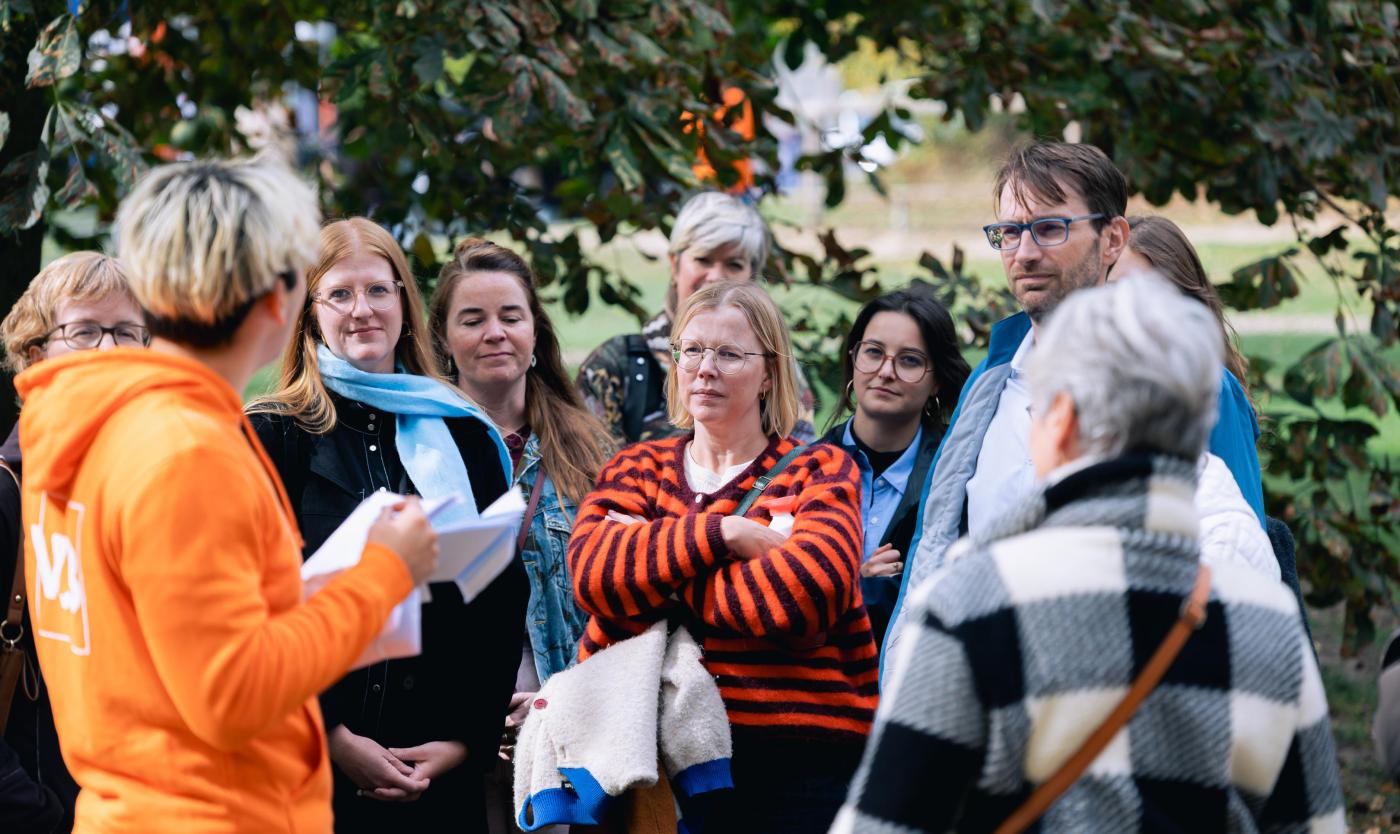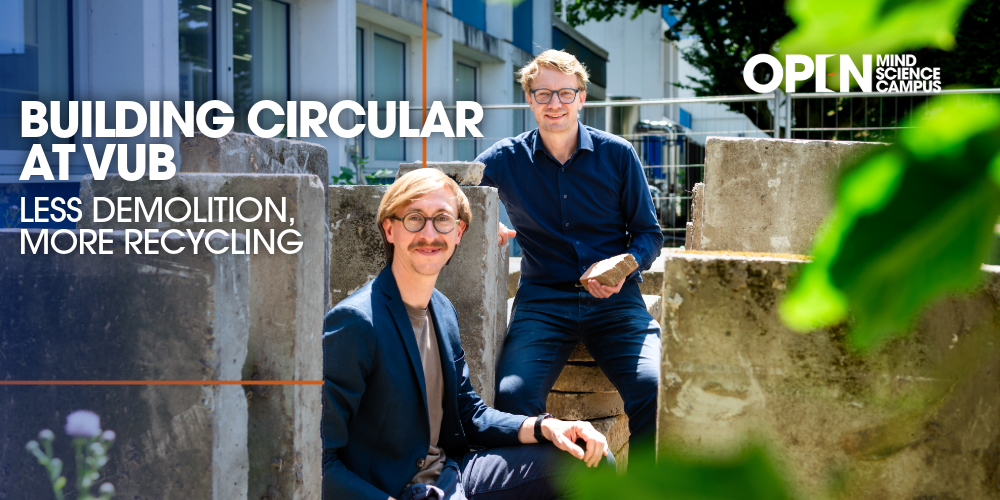
The roof over our heads comes at a cost – and not just financial. The construction sector consumes vast streams of materials and is responsible for nearly half of all global waste. That has to change. How? The VUB Architectural Engineering research group shows the way in two demonstration spaces, fittingly housed in the iconic student halls designed by architect Willy Van Der Meeren.
“Should I Stay or Should I Go” – the Clash anthem was also the motto of Kristiaan Borret when he served as Brussels’ bouwmeester between 2009 and 2014. With it, he raised questions about the future of the city’s buildings from the seventies to the nineties, such as the WTC towers and the Sheraton Hotel. Should they be demolished or preserved? And, just as importantly, how could circular building practices – the smart reuse of existing structures – become part of the debate? What value do we assign to recent, but quickly discredited, styles such as postmodernism?
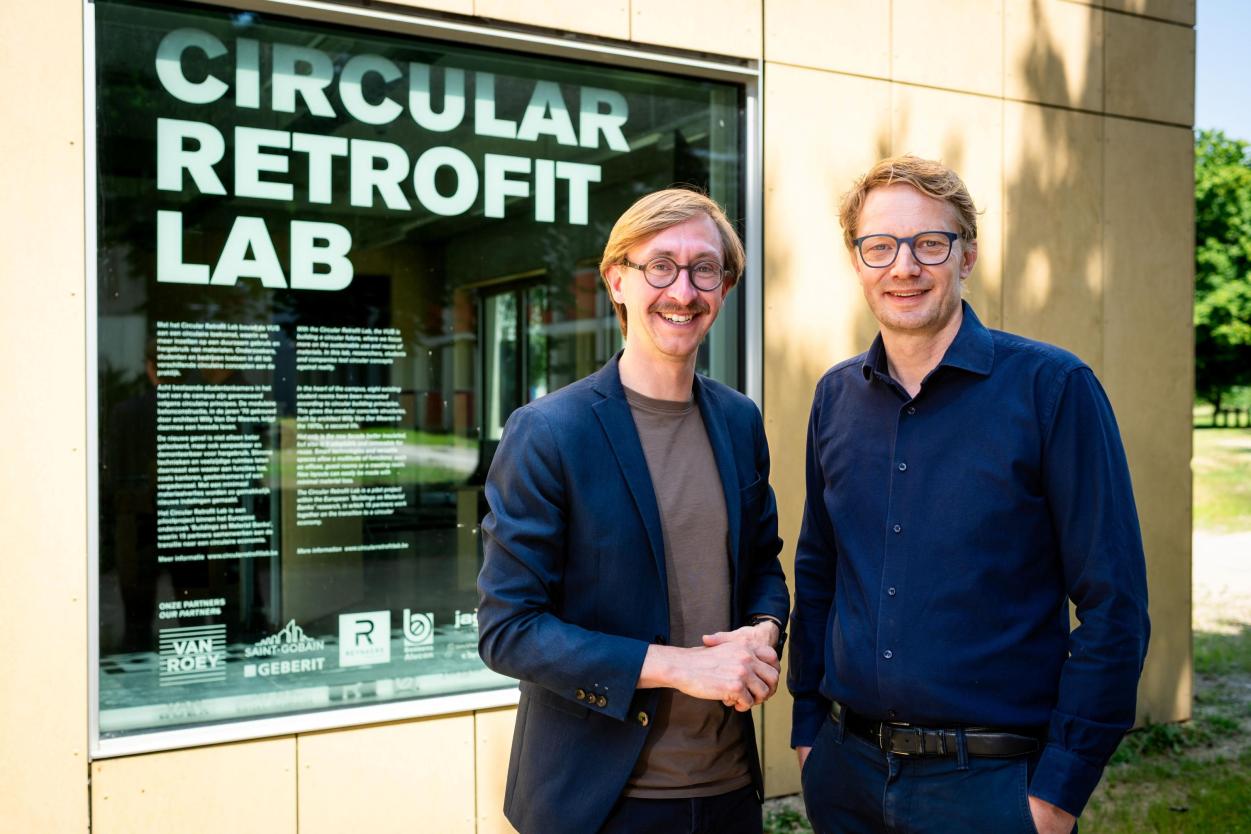
The same debate played out a decade ago at the VUB. The subject: the Willy Van Der Meeren student halls, built on campus in 1972 and 1973. Van Der Meeren designed these colourful units – yellow, blue, red, grey and later also green – using an innovative prefab system: concrete modules produced off-site and assembled like a giant Meccano set. For Professor Waldo Galle (VUB Architectural Engineering), it was love at first sight.
“Take away the walls and you can simply start again”
Waldo Galle: “The university gave Van Der Meeren free rein at the time, and we should be grateful for that. The buildings were meant as student housing, but Van Der Meeren realised that function might only be temporary. A good architect designs for changing needs – even when you cannot predict what those will be.”
That philosophy is visible in the buildings’ very structure. Everything is open plan. The units are separated only by lightweight partition walls, filled with sand to provide acoustic insulation.
Galle: “Take those walls away and you can simply start again. With this generous, straightforward, future-proof structure, Van Der Meeren was truly ahead of his time. And he showed that circular design is not rocket science – it starts with common sense. That approach is still at the heart of our research today.”
Yet the iconic halls came close to being demolished. They no longer met modern building standards and had fallen into disrepair. Demolition would have created space for green areas. Nice, but Professor Niels De Temmerman and his colleagues at VUB Architectural Engineering raised serious concerns.
Niels De Temmerman: “Demolishing means creating waste – waste that must be transported, dumped or, at best, recycled. In practice, you cause a small-scale environmental disaster right in the middle of campus. You may gain green space, but you’ll also need to rebuild elsewhere on campus, with the extra environmental cost of new construction. In our group, we work on future scenarios for sustainable building. That’s why we proposed renovating the halls and giving them a new role as demonstration spaces. This way, we could turn years of research and teaching into reality.”
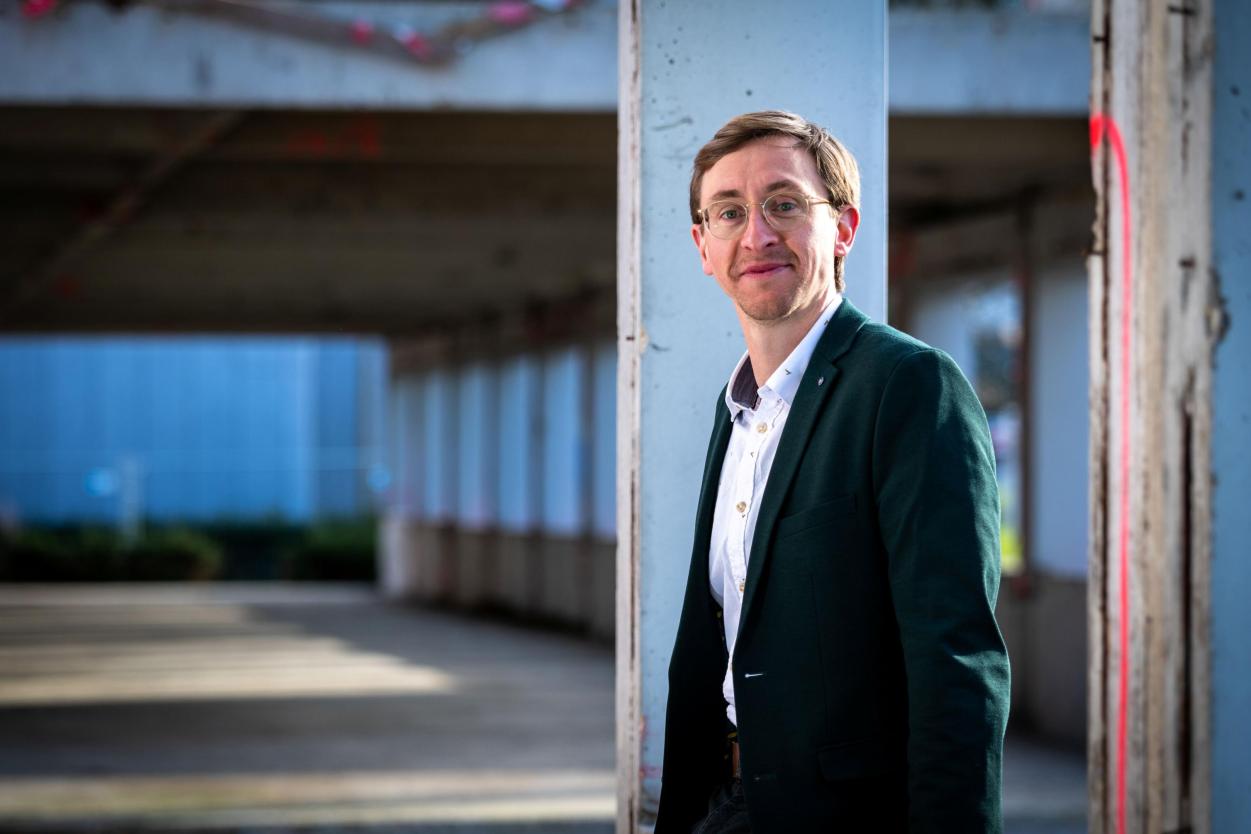
Waldo Galle
The VUB agreed, as part of its broader sustainability vision. The yellow halls were stripped back to their concrete skeleton. Only the load-bearing structure remained – a blank canvas, ready to be reimagined. The first project opened in 2019: the Circular Retrofit Lab, conceived as a demonstrator that pushes the limits of circular renovation and shows what’s possible. The goal: to inspire building professionals to bring circular principles into everyday practice.
De Temmerman: “Showing things physically works better than explaining them. We use the first floor mainly for seminars and workshops with architects, contractors and other actors in the construction sector.” At first glance, the interior of the Circular Retrofit Lab looks conventional – but appearances deceive. Every material and design choice hides a deliberate and often surprising story.
“In twenty years, this building might serve a completely different purpose”
De Temmerman: “See those wall panels? They’re made from recycled plasterboard. And they’re mounted in a frame system you can unclip, so you can remove and reuse them elsewhere. Everything is designed to be reversible, in line with circular principles: materials get a second life, components can be easily dismantled and reused. The chairs you’re sitting on? They’re the originals from the Van Der Meeren halls. Luckily they were left behind. And the table is just a sheet of DIY plywood, with reusable legs we screwed on from an online shop.”
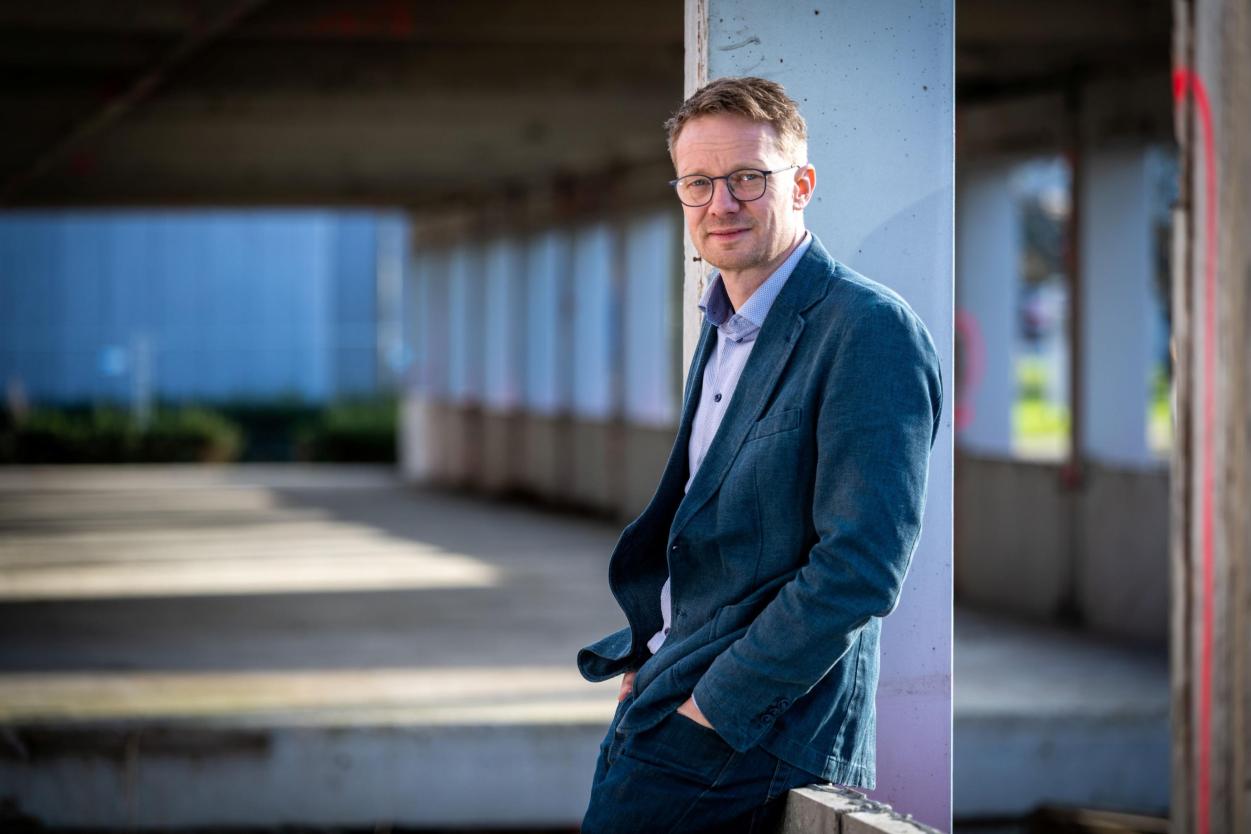
Niels De Temmerman
This turns the building into a materials bank – a place where materials can be deposited, reused and reclaimed for future projects. But circular building is about more than just reuse, warns De Temmerman. “As Waldo explained, you need to think ahead during the design process. In twenty years, this building might serve a completely different purpose. It has to be ready to adapt with minimal environmental impact. The seminar room we’re sitting in is a good example. We deliberately overdesigned the systems – electricity, lighting, ventilation – and doubled them. If we want, we can add a light partition wall and instantly create two separate offices or guest studios. That’s why there are also two kitchens and two bathrooms. For this single room it looks like overkill, but it allows us to split the space with minimal effort.”
The Circular Retrofit Lab proved that a smart renovation of Van Der Meeren’s buildings was not only possible but technically sound. Since then, the momentum has grown: in recent years, more and more halls have been refurbished and given new roles. Alongside the Circular Retrofit Lab came its sister project, the Willy Van Der Meeren Living Lab. Here, twelve former student rooms have been transformed into multipurpose spaces and guest studios, with special attention to energy performance and heritage value. Other halls have been converted into laboratories with advanced research facilities.
“Sometimes a building is ugly, but renovating is more sustainable, more social – or simply cheaper – than demolition”
Galle: “The Van Der Meeren halls were not officially listed, but for the university, and for generations of staff and students, they are valuable heritage. They are part of our story. Preserving them was absolutely the right choice.”
De Temmerman: “The halls reflect the spirit of their time, and they mirror the values the VUB stands for: openness, playfulness, modularity, innovation, adaptability. The fact that they still match contemporary ideas shows just how visionary Van Der Meeren was. We believe he would have welcomed the renovation. The buildings have been heavily adapted, but the modular structure is still very recognisable. We didn’t smother them in insulation foam and plaster, just to cover things up. With minimal demolition, we’ve preserved as much as possible and prepared the buildings for a new life. Hopefully they’ll last another fifty years.”
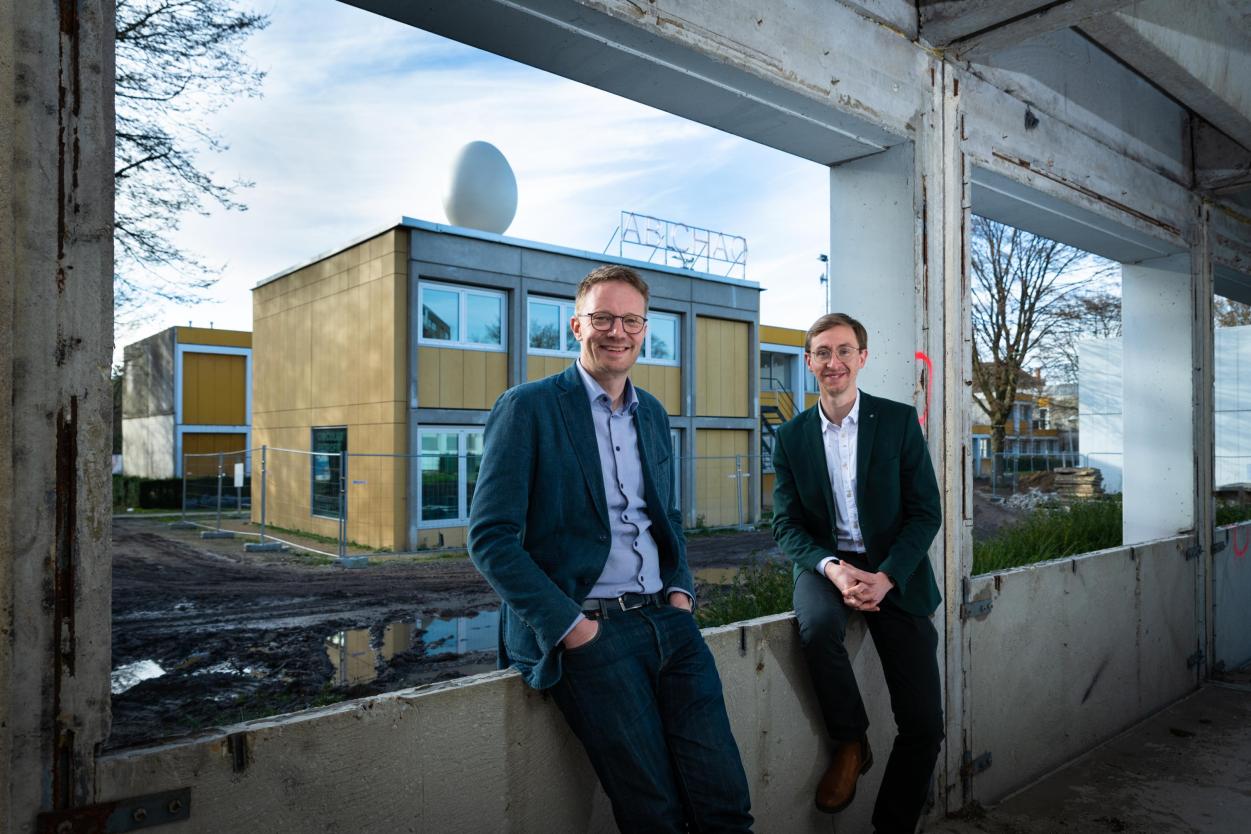
Galle: “I was immediately a fan of the halls, though for some people they’re more of an acquired taste. This project reminds us that architectural appreciation evolves. Take postmodern office facades from the nineties in Brussels – many find them ugly now, but in twenty or thirty years, we might see them differently. Brutalism was mocked for decades, and today it’s suddenly fashionable. And sometimes, even if a building is ugly, renovating it is still the more sustainable, social or economical option. You have to judge it case by case.”
A peek inside the labs of VUB scientists?
Join us on 23 September 2025 for the Academic Opening and explore the renewed VUB laboratories
On 23 September, VUB will not only open the new academic year but also the doors of its laboratories. Discover live the technological innovations and scientific breakthroughs our researchers are working on – the very ones that could soon make the headlines.
